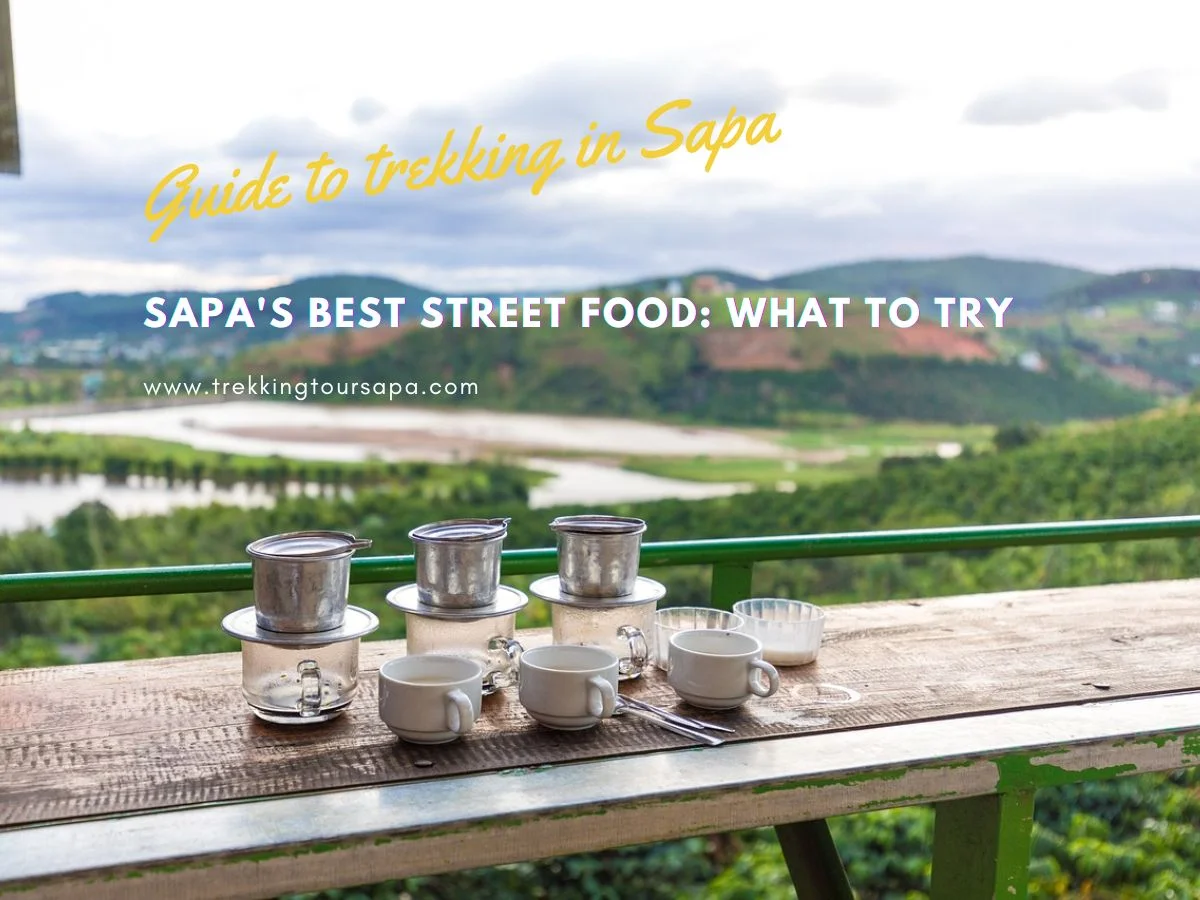If you’re a foodie who loves to explore new flavors and cultures, then Sapa is the perfect destination for you. This mountain town in northwestern Vietnam is known for its breathtaking scenery, diverse ethnic communities, and of course, its delicious street food. Sapa’s street food scene is like a melting pot of different culinary traditions that have been influenced by the region’s history and geography. So get ready to embark on a gastronomic adventure and taste some of the best street food that Sapa has to offer.
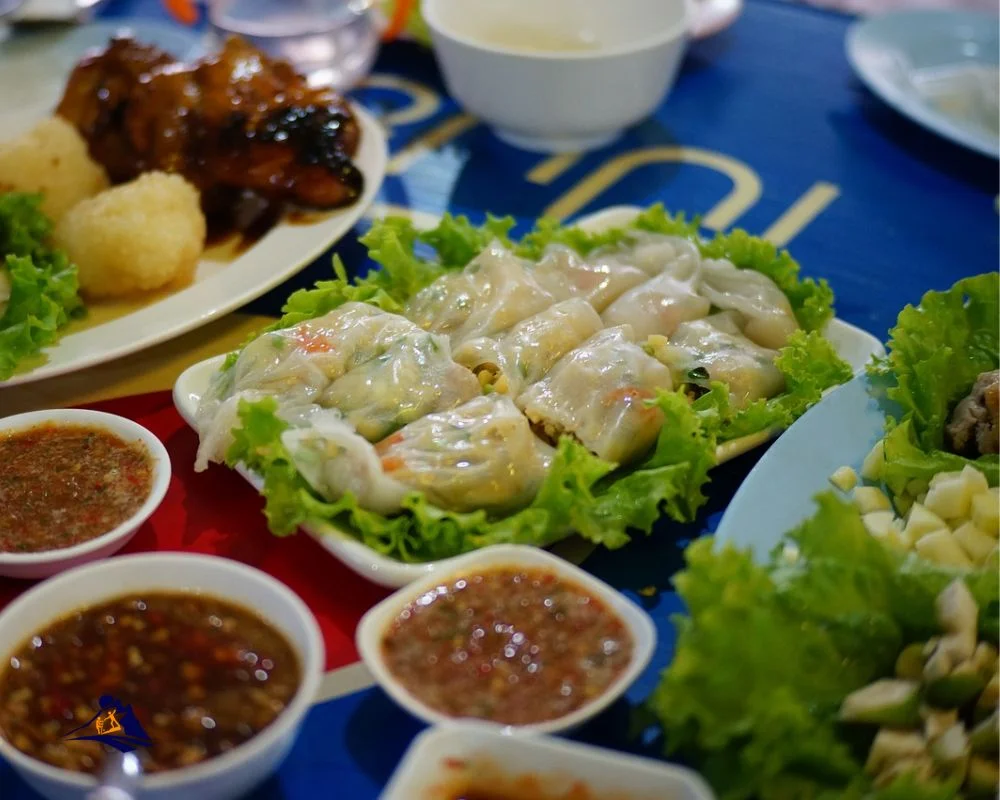
As they say, “the proof of the pudding is in the eating,” and when it comes to Sapa’s street food, this couldn’t be more true. From savory soups to sweet desserts, there is something here for every palate. So put on your walking shoes, grab your appetite, and let’s explore some of the most popular dishes that you must try while wandering through Sapa’s bustling streets.
Table of Contents
TogglePho
Let’s dig into the deliciousness of pho! This Vietnamese noodle soup has been a staple dish in Sapa for decades, and it’s easy to see why. Pho is made with rice noodles, fresh herbs like cilantro and basil, and a savory broth that can be customized with various types of meat such as beef or chicken. Its history dates back to the early 20th century when it was first introduced in Northern Vietnam.
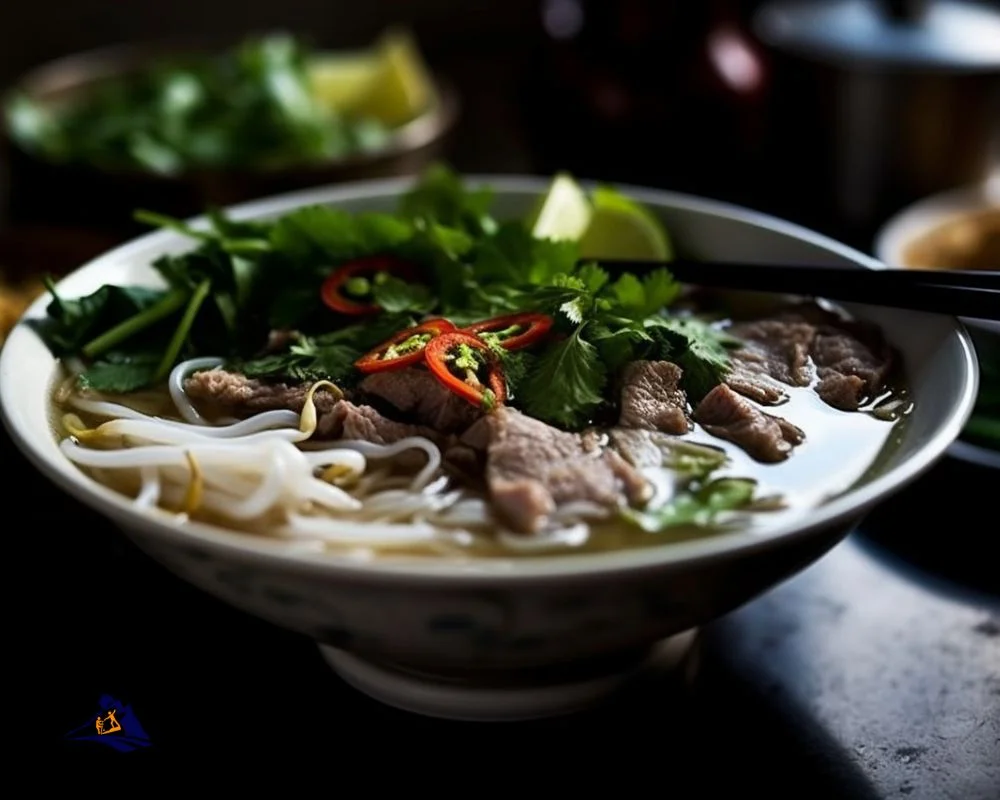
There are several variations of pho that you should try when visiting Sapa. The most popular is pho bo (beef pho), which features thin slices of beef cooked in the broth along with other traditional garnishes like bean sprouts and lime wedges. Another variation is pho ga (chicken pho) where the meat used is chicken instead of beef. For those who prefer a vegetarian option, there’s also pho chay (vegetarian pho) which uses tofu or mushrooms as protein substitutes. The best places to find authentic pho in Sapa include local street vendors like Phở Thanh Hương or restaurants such as Viet Emotion or Red Dao House.
Banh Mi
You can’t go wrong with the banh mi here; it’s a perfect balance of crispy bread, savory meat, and fresh vegetables all in one bite. Sapa has some of the best banh mi vendors in all of Vietnam, so you don’t want to miss out on this local favorite. Here are some unique variations of banh mi you should try during your visit:
- Grilled Pork Banh Mi: This classic version features slices of grilled pork with pickled carrots and daikon radish, cilantro, chili peppers, and mayonnaise.
- Tofu Banh Mi: A vegetarian option that replaces the meat with crispy tofu for a deliciously crunchy texture.
- Egg Banh Mi: Perfect for breakfast or brunch, this version includes scrambled or fried eggs along with other typical toppings like cucumber and pate.
- BBQ Chicken Banh Mi: For those who love a bit of smoky flavor in their sandwiches, this variation is made with tender barbecued chicken and drizzled with hoisin sauce.
- Avocado Banh Mi: This trendy twist on the classic banh mi adds creamy avocado slices to the mix for an extra burst of flavor.
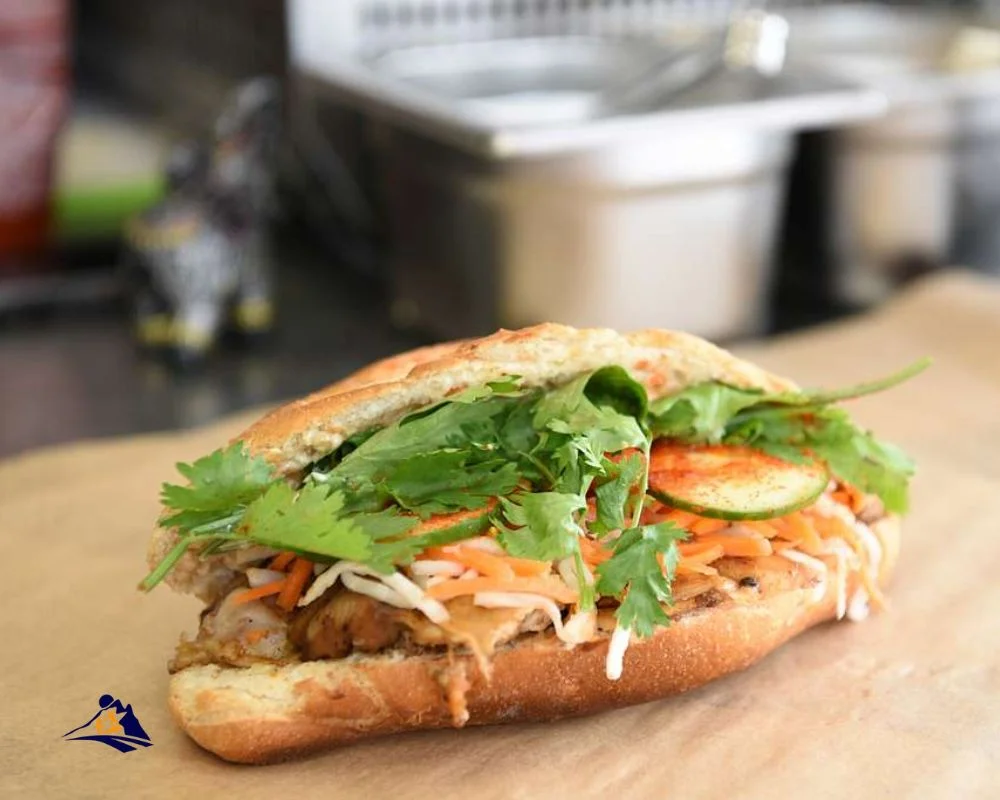
With so many options to choose from, you’ll want to sample as many different types as you can while exploring Sapa’s street food scene. Don’t be afraid to ask locals for recommendations or try something new – who knows what delicious surprises await!
Cha Ca
If you’re craving a unique and flavorful seafood dish, don’t miss out on cha ca – a popular Vietnamese specialty made with turmeric-marinated fish and plenty of herbs and spices. Originally hailing from Hanoi’s Old Quarter, this dish has become a beloved staple across Vietnam’s street food scene. The history of cha ca date back to the 19th century when it was first created by a family in the Cha Ca La Vong neighborhood. Today, the dish can be found in many different variations throughout the country.
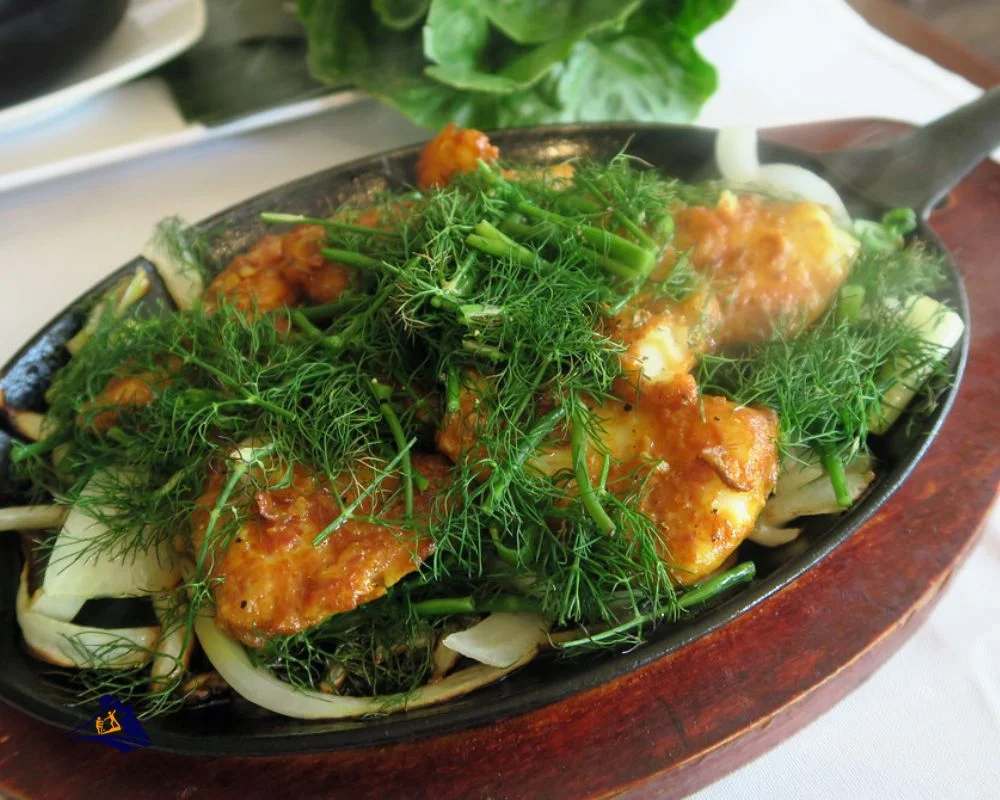
When enjoying cha ca, it’s important to pair it with the right accompaniments to truly bring out its flavors. A typical serving will come with rice noodles, fresh herbs like dill and basil, peanuts, scallions, pickled vegetables like carrots and daikon radish, and nuoc cham – a sweet-sour-spicy dipping sauce made from fish sauce. Mix everything for an explosion of textures and flavors that perfectly complement one another. With its rich history and delicious taste profile, cha ca is worth trying during your visit to Sapa!
Xoi
If you’re interested in trying one of Sapa’s best street foods, then Xoi is worth a taste. One of the key features of Xoi dishes is the sticky rice used as a base, which can be paired with various toppings like chicken, pork, or mushrooms. You’ll find that there are many different flavors and combinations to explore when it comes to this beloved Vietnamese snack.
Sticky Rice Dishes
Indulge in the savory satisfaction of sticky rice dishes, a staple of local cuisine that is sure to leave you feeling full and satisfied. From sweet to savory, there are so many varieties of sticky rice dishes to try in Sapa. One must-try dish is the sticky rice dessert, also known as xôi ngọt. This popular treat is often served with mung bean paste or coconut shavings and can be found at street vendors throughout the city.
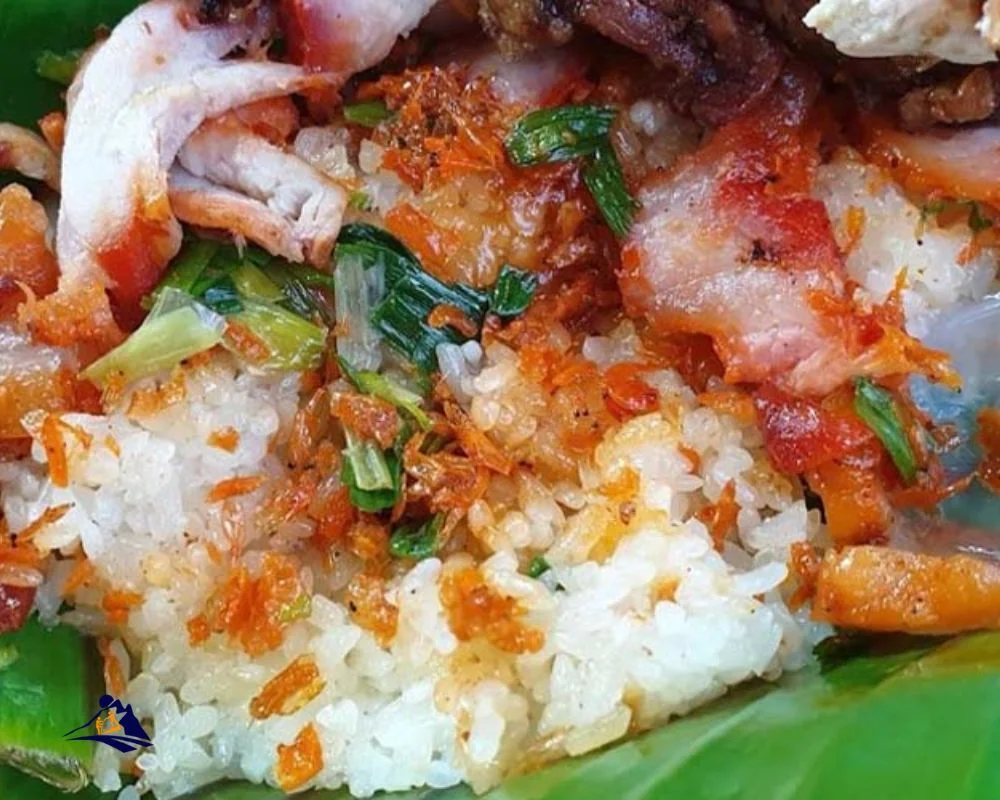
Another interesting aspect of sticky rice dishes in Sapa is the regional variations. Each ethnic minority group has its unique way of preparing this dish. For example, the Hmong people make a version called pú nóng that includes pork belly and black beans while the Dao people have a special recipe made with pumpkin and peanuts. Trying different variations from various tribes adds an extra layer of excitement to your culinary adventure through Sapa.
Different Flavors of Xoi
Get ready to explore the diverse flavors of xoi, with options ranging from savory to sweet and everything in between – did you know that there are over 30 different types of sticky rice dishes in Vietnam? One popular type of savory xoi is Xoi Ga, which consists of steamed sticky rice topped with shredded chicken, fried shallots, and a side of pickled vegetables. For those looking for a sweeter option, Xoi Gac is a must-try. This vibrant orange dish gets its color from gac fruit and is sweetened with sugar and coconut milk.
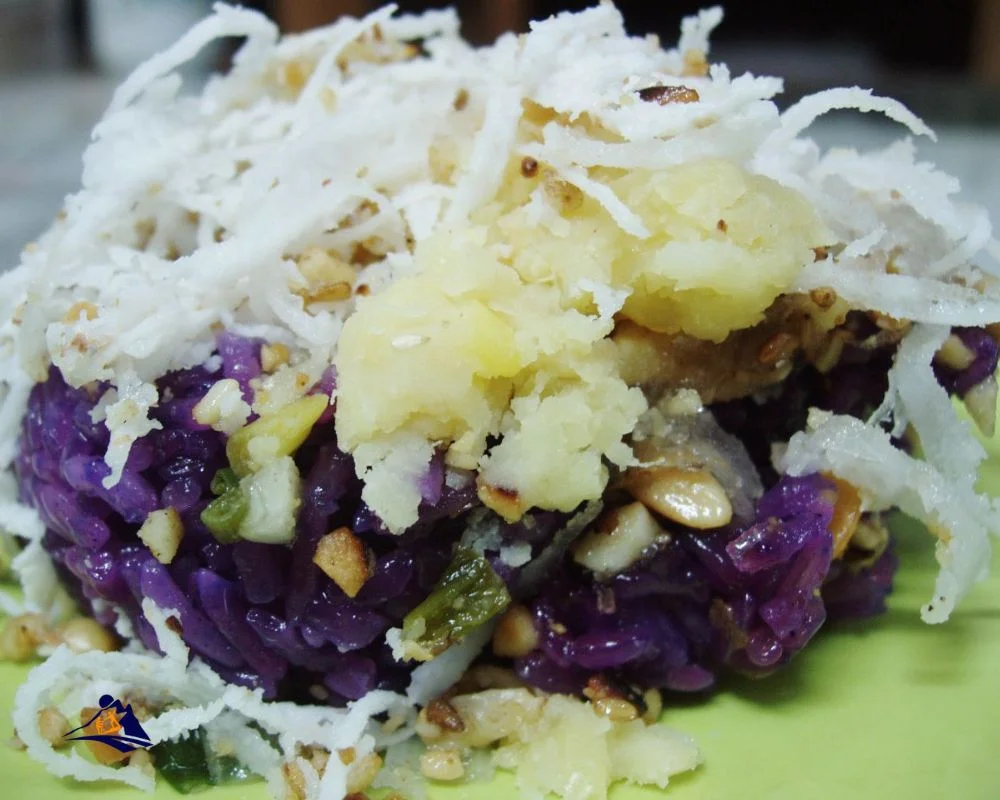
While traditional xoi dishes have been around for centuries, modern twists have also emerged. One example is Xoi Che Bap which combines two popular Vietnamese desserts: corn pudding and sticky rice. Another interesting twist is Xoi Chien Phong, where sticky rice is deep-fried until crispy outside but still soft inside. It can be served plain or as a dessert with condensed milk or chocolate sauce drizzled on top. With so many flavors to choose from, it’s no surprise that so has become one of Sapa’s best street foods!
Nem Ran
You have to try the crispy and savory Nem Ran, it will leave you wanting more with every bite. This Vietnamese street food is commonly known as spring rolls or fried rolls, but the Sapa variation of Nem Ran is unique. The dish typically consists of a mixture of ground pork, shrimp, mushrooms, onions, and vermicelli noodles wrapped in rice paper and deep-fried until golden brown.
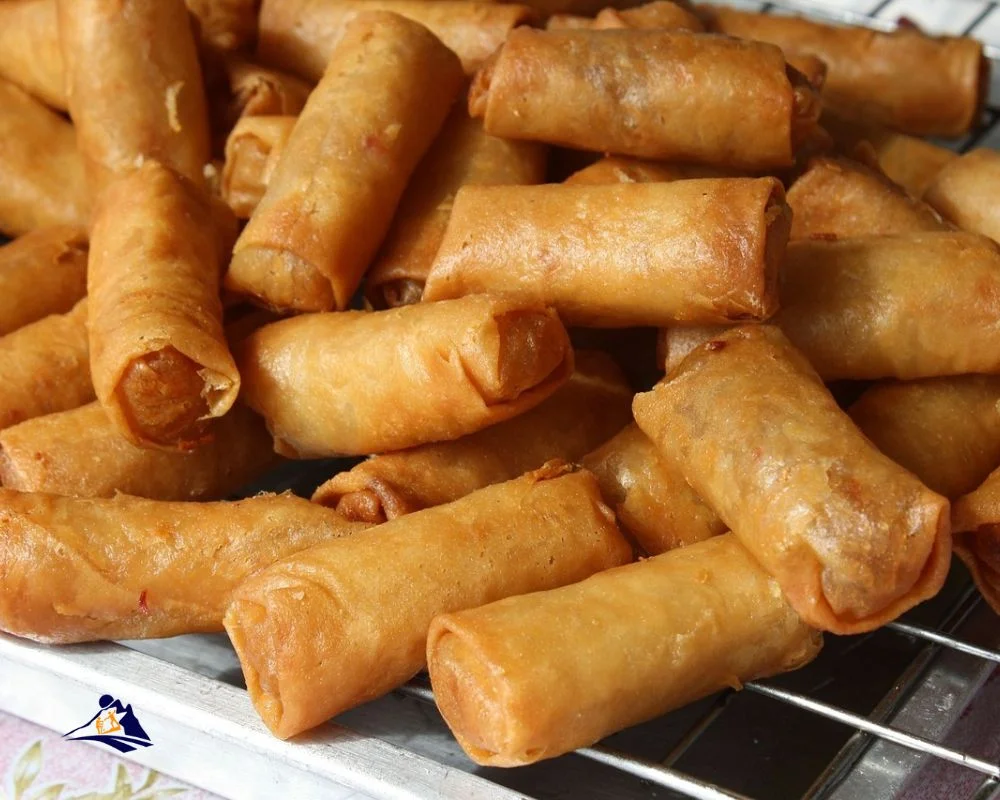
Variations of Nem Ran can be found all over Vietnam, but in Sapa, they use local ingredients to give it a distinct flavor. Some variations include adding minced pork liver for a richer taste or using black fungus instead of mushrooms for added texture. The dipping sauce also varies depending on the region – in Sapa, they often serve it with sweet chili sauce or nuoc cham made with fish sauce. Don’t miss out on trying this delicious street food while exploring the vibrant culture and cuisine of Sapa!
Banh Cuon
Looking for a tasty and unique street food experience in Sapa? Look no further than Banh Cuon, a Vietnamese dish consisting of steamed rice rolls filled with meat or vegetables. For the best Banh Cuon in town, head to one of the many street vendors lining the bustling streets of Sapa, where you’ll find fresh and flavorful versions of this beloved local favorite.
Steamed Rice Rolls
If you’re not a fan of traditional Vietnamese dishes, don’t worry – these soft and flavorful steamed rice rolls are sure to win you over. Known as Banh Cuon in Vietnamese, Steamed Rice Rolls have been a popular street food in Sapa for decades. The dish consists of thin sheets of rice batter filled with minced pork and mushrooms, served with a side of fish sauce or soy sauce.
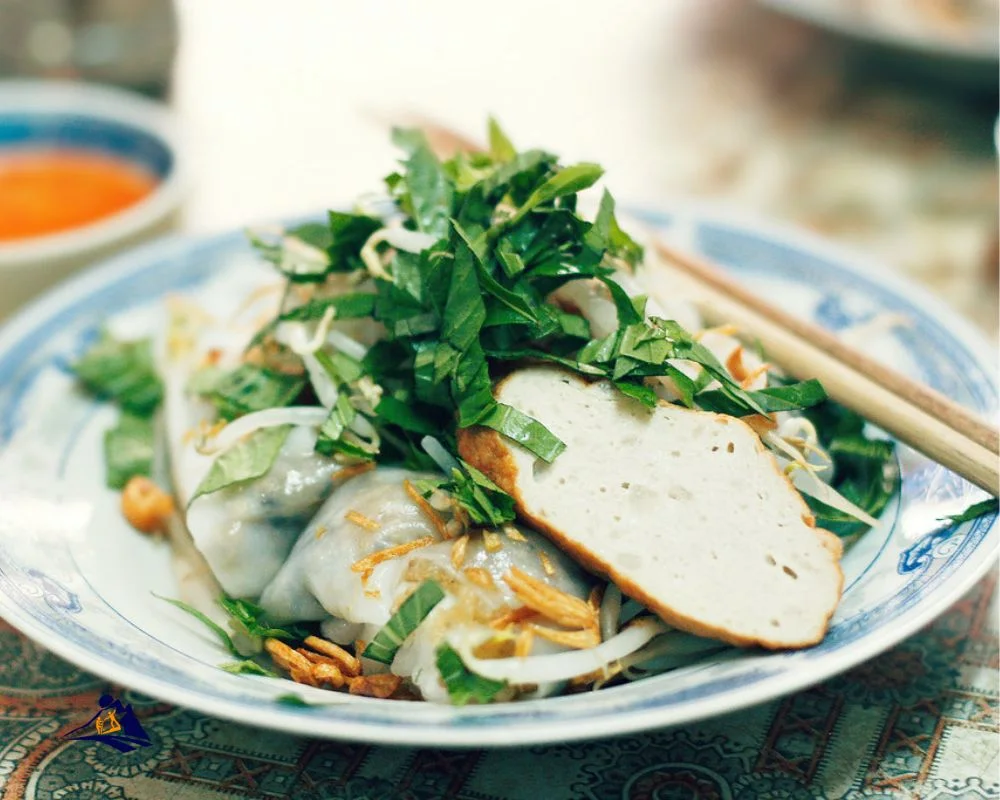
Here are the top five variations of Steamed Rice Rolls that you can try while exploring the streets of Sapa:
- Banh Cuon Thanh Tri: Originating from Hanoi, this version is made with ground pork and wood ear mushrooms.
- Banh Cuon Tay Ho: A variation from the Tay Ho district in Hanoi, it contains shrimp and lean pork.
- Banh Cuon Gia Truyen: This family recipe is highly sought after by tourists for its generous filling of minced meat.
- Banh Cuon Nong: As the name suggests, these rolls are served hot and fresh off the steamer.
- Banh Cuon Chay: For those who prefer vegetarian options, this version has tofu instead of meat.
Now if you want to make your Steamed Rice Rolls at home, here are some top tips:
- Use a non-stick pan or a good-quality steam basket to prevent sticking.
- Make sure the batter is spread evenly on the pan to get thin sheets.
- Steam them for just 1 minute until they are cooked through but still soft and pliable.
- Prepare all ingredients beforehand so that you can fill them quickly while they’re still warm.
- Serve them immediately with dipping sauce for optimal flavor.
The Best Places to Try Banh Cuon in Sapa
Looking for the best banh cuon in Sapa? Look no further! This traditional Vietnamese dish is a must-try when visiting Sapa, and there are plenty of places to find it. One popular spot is Banh Cuon Ba Hanh, located in the heart of the city. Here, you can try freshly made banh cuon filled with pork and mushrooms, served with a side of fish sauce and herbs. The restaurant also offers other traditional Vietnamese dishes such as pho and bun cha.
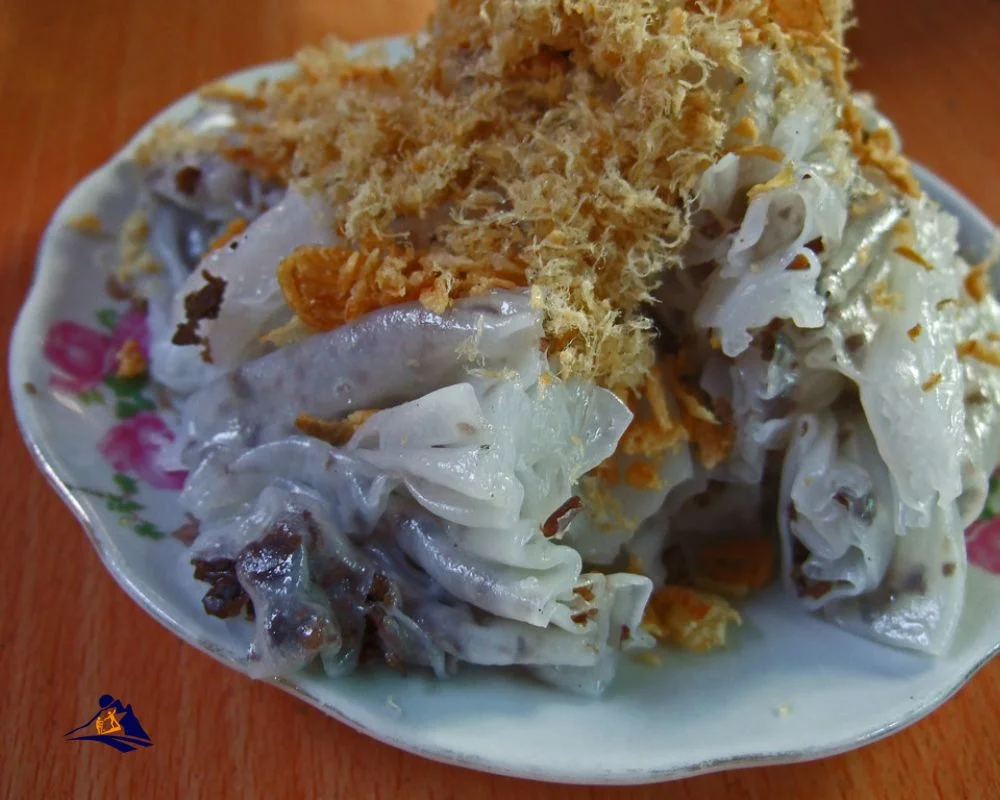
If you’re feeling adventurous and want to try making your banh cuon at home, here are some tips: start by making the thin rice flour batter using rice flour, water, and salt. Steam the batter in a thin layer until cooked through. Next, prepare the filling by cooking ground pork or shrimp with minced mushrooms and onions. Spoon the filling onto each rice noodle sheet before rolling them up into cylinders. Serve hot with fish sauce dipping sauce on the side for an authentic taste of Vietnam!
Che
She is a must-try dessert in Sapa, with its sweet and refreshing flavors that will leave your taste buds wanting more. This Vietnamese dessert comes in different variations depending on the region, but the most popular one in Sapa is Che Ba Mau which translates to “Three-color Che”. It’s made with mung bean paste, coconut milk, and sugar syrup and topped with colorful jellies of green (pandan), yellow (mung bean), and red (azuki bean). The combination of these ingredients creates a creamy texture that melts in your mouth.
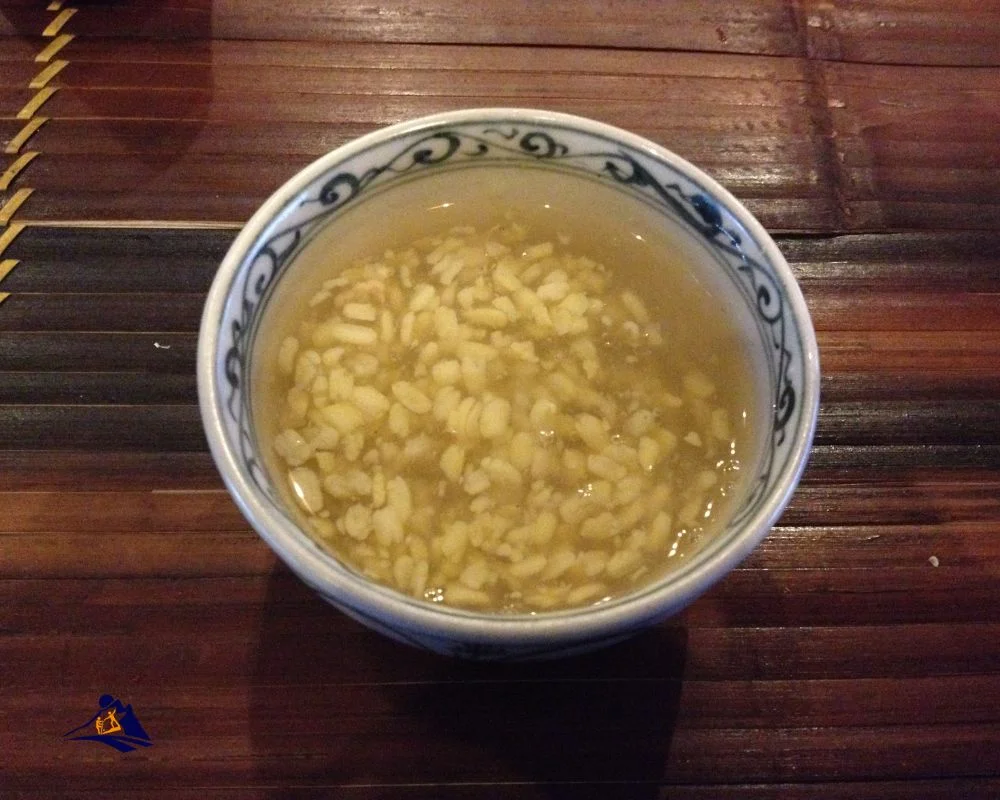
Apart from Che Ba Mau, you can also find other variations of che in different regions of Vietnam. For example, Che Dau Xanh is a type of made with cooked mung beans mixed with sugar and coconut milk. In some areas like Ho Chi Minh City, they add tapioca pearls into their che which makes it more chewy. Each variation has its unique flavor profile that reflects the local ingredients used. So make sure to try out as many types of che as possible during your trip to Vietnam!
Coffee
You can’t visit Vietnam without trying the coffee, and lucky for you, there are plenty of cafes to choose from with unique twists on this popular drink. Sapa has some of the best coffee shops in the country, offering a variety of blends and traditional brewing methods. One must-try is egg coffee, which originated in Hanoi but has become a popular choice in Sapa too. This creamy concoction is made by whisking egg yolks with condensed milk and sugar before pouring it over strong Vietnamese coffee.
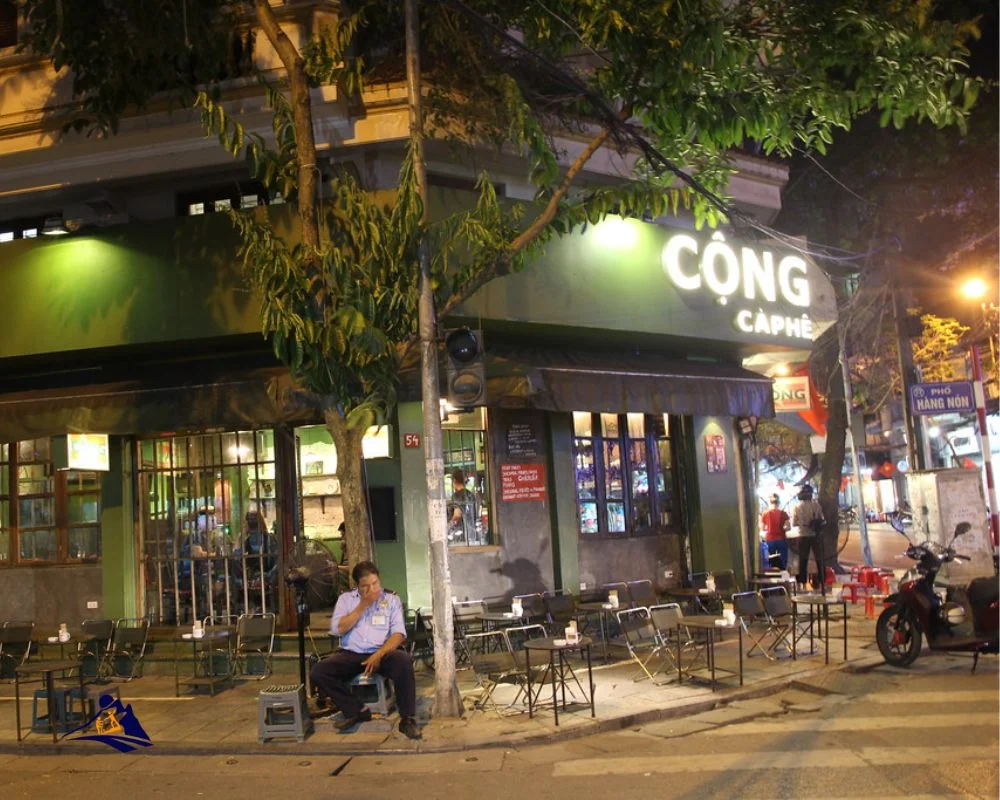
Another must-visit spot for coffee lovers is Cong Caphe, a chain cafe that serves up traditional Vietnamese brews with a retro twist. The decor is inspired by communist-era propaganda posters, making it an interesting cultural experience as well as a great place to grab a cuppa joe. Their signature drink is coconut iced coffee, which combines sweetened condensed milk with espresso and coconut milk for a refreshing tropical taste. If you’re looking for something stronger, try there ca phe sua chua (yogurt coffee), which features tangy yogurt mixed with sweetened condensed milk and strong black coffee – not your average latte!
Sapa’s Best Street Food: What To Try Frequently Asked Questions
What is the history of street food in Sapa?
The history of street food in Sapa is rich and filled with cultural significance. Street food has been a part of the local culture for generations, serving as a way to connect with others and share their culinary traditions. The unique blend of Vietnamese, Chinese, and French influences can be tasted in every dish, making it an exciting experience for any traveler who craves something new and authentic. From savory crepes to steaming hot bowls of pho, each dish tells a story about the people who created it. Whether you are looking for a quick snack or a full meal, exploring the vibrant world of Sapa’s street food is an adventure that should not be missed.
Are there any vegetarian or vegan options available in Sapa’s street food scene?
If you’re a vegetarian or vegan, you’ll be happy to know that there are plenty of options available in Sapa’s street food scene. From noodle soups made with vegetable broth to stir-fried vegetables and tofu dishes, you won’t have to sacrifice flavor for your dietary restrictions. Some popular vegetarian options include banh mi sandwiches filled with marinated tofu and fresh veggies, as well as spring rolls stuffed with rice noodles, herbs, and crispy fried tofu. For vegans, there are also sweet treats like coconut milk sticky rice with fruit toppings. Don’t worry about missing out on the delicious street food experience just because of your dietary choices – Sapa has got you covered!
How do the prices of street food in Sapa compare to other popular tourist destinations in Vietnam?
When it comes to street food pricing, Sapa is a great destination for budget-conscious travelers. Compared to other popular Southeast Asian cities, street food in Sapa is relatively affordable. However, it’s worth noting that the prices can vary depending on the location and type of food you’re looking for. While some dishes may cost as little as a few cents, others can be priced at a dollar or more. Despite this variance, one thing is clear: the local economy heavily relies on street vendors and their offerings. Street food plays an essential role in supporting small businesses in Sapa and contributes significantly to its community’s economic well-being.
Are there any particular street food vendors or stalls that are highly recommended by locals in Sapa?
You’re in for a treat with Sapa’s street food scene! It’s a hidden gem that locals swear by. To navigate the scene, keep an eye out for vendors with long lines – they often have the most popular dishes. Speaking of which, some favorites include thang co (a hearty soup made with horse meat and organs), banh mi (Vietnamese-style sandwiches), and pho (noodle soup). Don’t forget to try the grilled meats, too. As for specific stalls to check out, ask around once you’re there or do some online research beforehand. One tip: don’t be afraid to venture off the beaten path and try something new – you might just discover your new favorite dish!
What are some common ingredients used in Sapa’s street food dishes that may be unfamiliar to foreigners?
If you’re exploring the street food scene in Sapa, don’t be surprised if you come across some indigenous ingredients that may be unfamiliar to foreigners. Many of these local favorites have cultural significance and are used in traditional dishes. For instance, black cardamom is often found in stews and soups, lending a distinct earthy flavor. Another ingredient to look out for is bamboo shoots, which are cooked with meat or vegetables and can add a crunchy texture to your dish. And don’t forget about the unique flavors of fermented foods like pickled mustard greens or fish sauce – they may take some getting used to, but are an important part of Sapa’s culinary heritage.
Conclusion
So, you’ve now discovered some of the best street food in Sapa. From the delicious Pho to the sweet Che, your taste buds have been taken on a journey through Vietnamese cuisine. But as much as you enjoyed these dishes, it’s important to remember the context in which they are served.
While indulging in these tasty treats, you may have also witnessed poverty and hardship among locals. The juxtaposition of Sapa’s beautiful scenery and its struggles can leave a lasting impact on visitors. So next time you savor that Banh Mi or sip on that coffee, take a moment to appreciate the culture and people behind it all.
